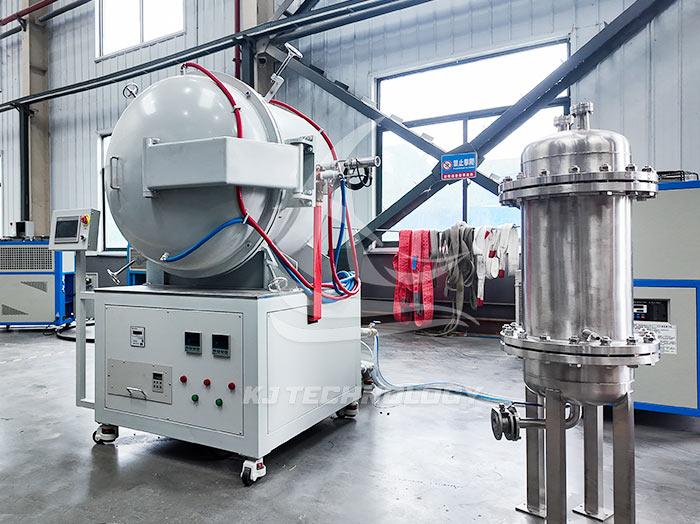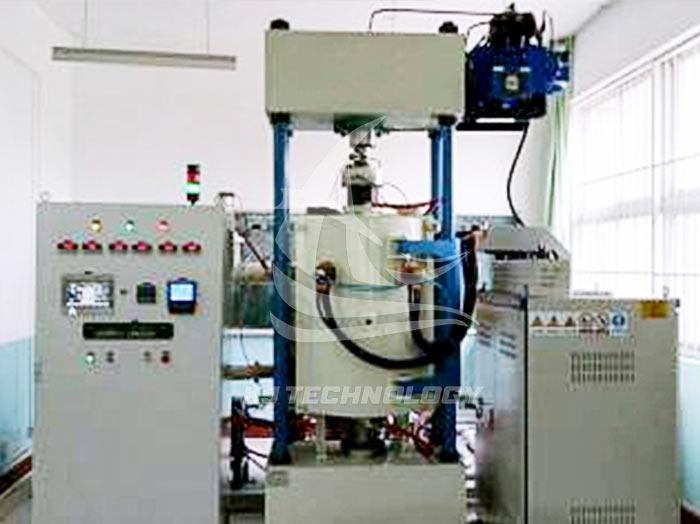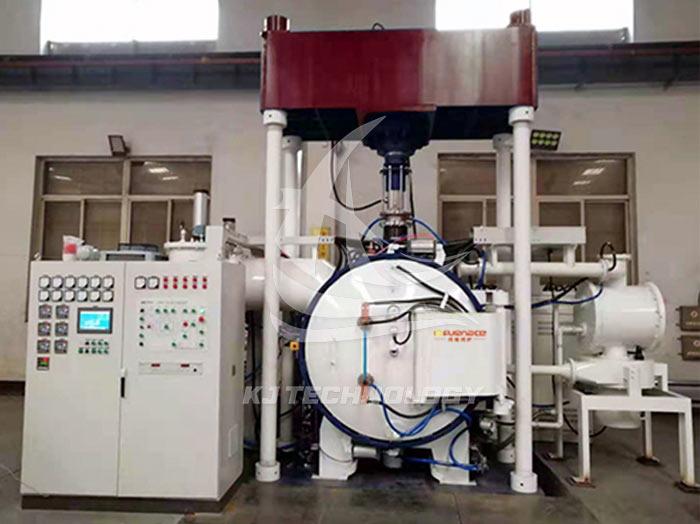Application of Gas Vacuum Furnace in Aerospace Field
 07-29-2025 Author: KJ technology
07-29-2025 Author: KJ technology
The application of gas vacuum furnaces in the aerospace field is extensive and critical, mainly reflected in the following aspects:
1. Key material heat treatment
High temperature alloy and titanium alloy treatment: Gas vacuum furnace avoids oxidation in a vacuum environment, improving material strength, toughness, and corrosion resistance. For example, after vacuum solution treatment, the grain size of aircraft engine turbine blades can be controlled at the micrometer level, which increases the fatigue life of nickel based alloys by more than three times.
Aluminum alloy strengthening: Aluminum alloys used in aircraft structures need to be optimized for grain structure through vacuum heat treatment to enhance overall strength and lifespan. NASA defines 9 types of vacuum heat treatment, including strengthening alloys to desired properties through low-temperature tempering to ensure the reliability of aircraft in extreme environments.
2. Precision component manufacturing and connection
Vacuum brazing technology: achieving non oxidative connection of high-temperature alloy components in a vacuum environment, enhancing joint strength and corrosion resistance. For example, a certain aviation manufacturing company uses vacuum brazing technology to connect new engine components, which not only improves heat resistance, but also reduces overall weight and improves fuel efficiency.
Vacuum hot isostatic pressing (HIP): used for post-processing of metal 3D printed parts, such as Ti-6Al-4V, In718 high-temperature alloy, etc. By eliminating internal pores (increasing density from 95% to 99.5%), the mechanical properties are significantly improved to meet the manufacturing needs of complex components.
3. Special process support
Vacuum degassing and performance testing: Simulate a high vacuum environment in space, conduct high-temperature degassing, thermal vacuum testing, and long-life assessment on aerospace components. For example, a vacuum degassing furnace achieves vacuum degassing of aerospace components through high-temperature treatment at 1200 ℃, ensuring their stability during in orbit operation.
Vacuum coating annealing: Coating annealing is performed on second-generation high-temperature superconducting tapes (such as YBCO) in a vacuum and specific gas atmosphere to form a c-axis oriented superconducting layer with a critical current density of over 1 × 10 ⁶ A/cm ², promoting the practical application of high-temperature superconducting technology.








